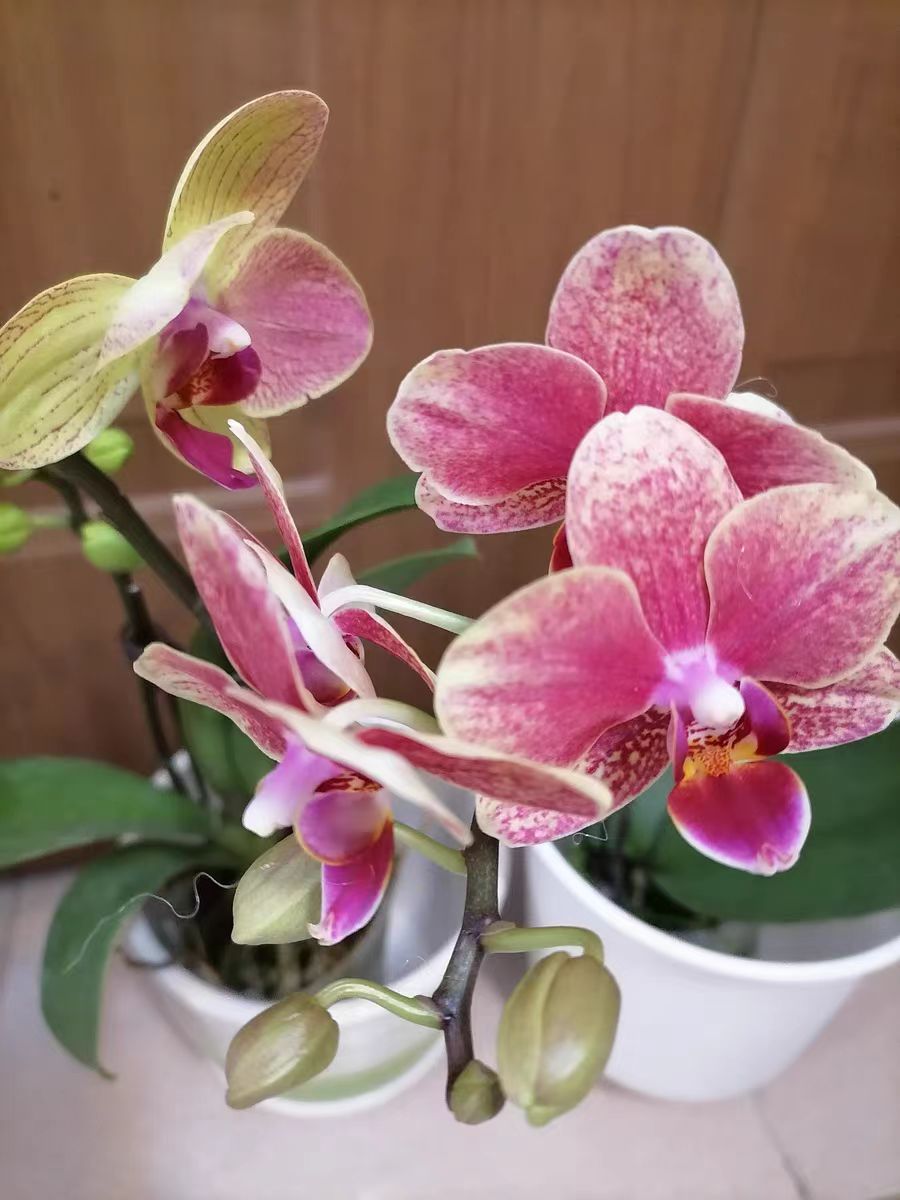When maintaining Phalaenopsis (moth orchids), have you ever encountered the problem where flower buds suddenly stop opening halfway, or even dry up and fall off? This phenomenon troubles countless plant lovers. In fact, the halt in flower bud development is caused by multiple factors such as temperature, light, water, nutrients, and ventilation.
I. Reasons for Flower Buds Stopping Development Halfway
1. Temperature
As a tropical epiphytic orchid, Phalaenopsis is extremely sensitive to temperature. The optimal temperature for flower bud differentiation is 18–25°C, with a required temperature difference of 5–8°C between night and day to stimulate bud formation. Sudden temperature fluctuations (e.g., diurnal temperature differences exceeding 15°C) or prolonged exposure to critical temperatures (below 15°C or above 30°C) disrupt cell division and hormonal balance in the buds, leading to developmental stagnation. Common triggers include unstable room temperatures in winter or direct air conditioning drafts in summer.
2. Light
Phalaenopsis prefers diffused light and avoids direct 强光 (strong light). Excessive light (over 25,000 lux) can burn bud tissues, causing dehydration and drying; insufficient light (below 10,000 lux) reduces photosynthesis efficiency, failing to provide adequate energy for bud development. Additionally, long-term unilateral light exposure can cause uneven bud growth or even deformities.
3. Water
The aerial roots of Phalaenopsis are highly sensitive to moisture. Overwatering easily leads to substrate waterlogging, root hypoxia, and rot, impairing nutrient absorption; drought prevents the plant from maintaining normal physiological metabolism, causing buds to wither due to interrupted water supply. Meanwhile, air humidity below 50% makes buds prone to drying and cracking, hindering development.
4. Nutrients
From flower bud differentiation to development, Phalaenopsis has a sharp increase in demand for phosphorus and potassium. Excessive nitrogen fertilizer combined with phosphorus-potassium deficiency can cause vegetative overgrowth while suppressing reproductive growth. Moreover, deficiencies in secondary and micronutrients like calcium and magnesium may trigger physiological bud diseases. Failing to timely apply specialized fertilizers before flowering or using overly concentrated fertilizers that burn roots can both affect bud health.
5. Ventilation
In enclosed spaces, poor air circulation can lead to persistently high humidity and insufficient carbon dioxide, making buds susceptible to diseases like botrytis and soft rot. Stagnant air also inhibits transpiration, affecting the transport efficiency of water and nutrients, indirectly impeding bud development.
II. Solutions for Stagnant Flower Bud Development
1. Temperature Control
Maintain a stable environment at 18–25°C, ensuring winter room temperatures do not drop below 15°C and summer temperatures stay below 30°C.
Create a 5–8°C night-time temperature drop by opening windows or turning off heaters.
2. Light Adjustment
Place the orchid on an east or north-facing windowsill to receive gentle diffused light.
Use a 50% shade net to block strong midday sun in summer.
Supplement with an LED grow light (red:blue light ratio 4:1) for 8–10 hours daily during continuous overcast weather or low winter light.
3. Watering
Follow the "dry-wet cycle" principle: water thoroughly only when the substrate surface is dry. Use the bottom-drenching method to avoid wetting the buds directly.
4. Humidity Regulation
Increase air humidity to 60–80% using a humidifier or water trays, but prevent water droplets from accumulating on buds.
5. Fertilization
Spray a 1,000-fold diluted potassium dihydrogen phosphate solution every 7–10 days before flowering to promote bud differentiation.
During the bud stage, switch to a specialized orchid fertilizer with an N-P-K ratio of 10-30-20, applying thin fertilizers frequently to avoid root burns.
6. Ventilation
Open windows for 2–3 hours daily or use a small fan on low speed to circulate air.
Maintain a 15–20 cm spacing between plants when densely arranged to prevent leaf shading and improve airflow.
What should I do if the flower buds of Phalaenopsis (moth orchid) stop opening halfway?

Share with
Tagged in :




Leave a Reply